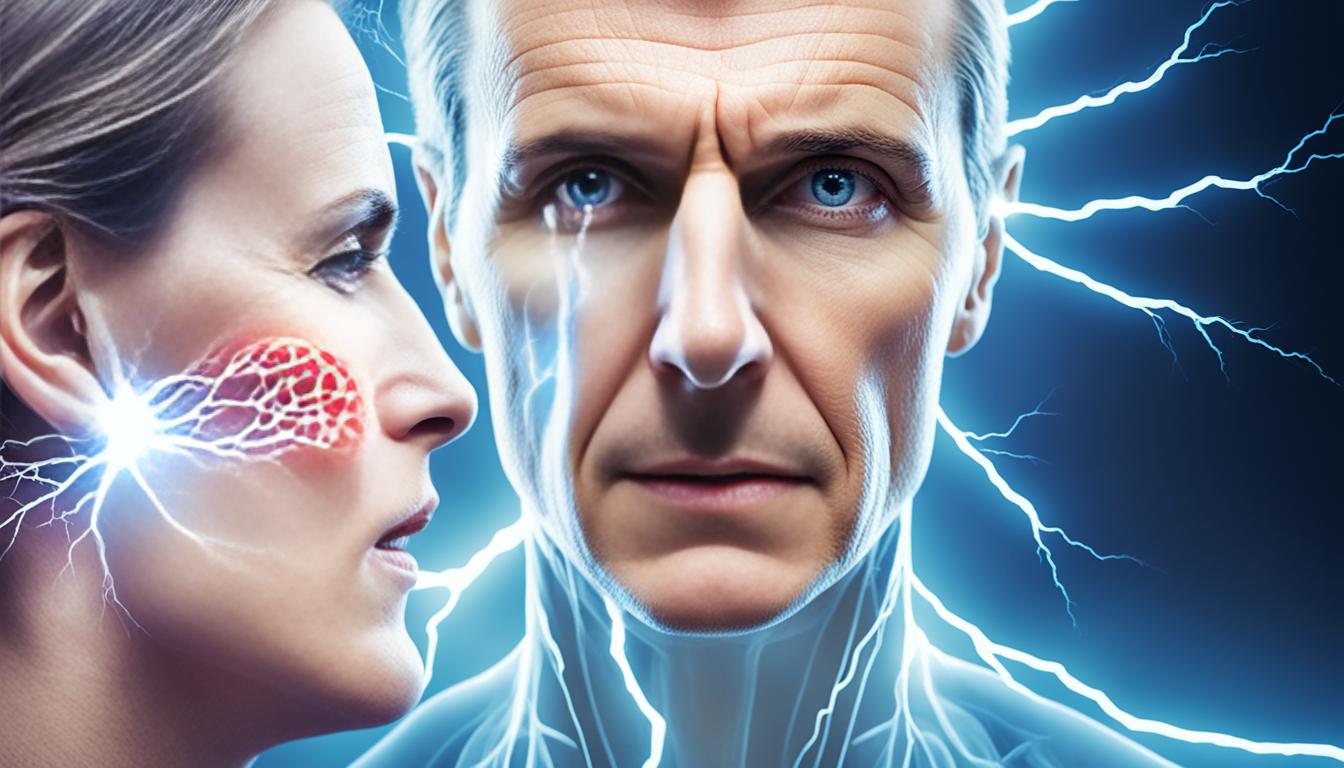Trigeminal neuralgia (TN) brings on sudden, strong facial pain that feels like electric shocks. This issue comes from the trigeminal nerve and makes tasks like talking, eating, or drinking very hard. It’s more common in women over 50, lowering their quality of life.
The specific cause of TN is unknown, but it’s linked to pressure on the nerve, other nerve problems, or injuries. Some cases have no clear reason.
To diagnose TN, doctors look for signs like sharp, stabbing facial pain in the nerve’s area. MRI scans check for issues like nerve pressure.
Doctors use medicines or surgeries to treat TN. Also, they are looking at stem cell therapy. But, more studies are needed to know if it really helps.
Key Takeaways:
- Trigeminal neuralgia causes surprising, intense facial pain.
- It can limit what people do daily and their life’s enjoyment.
- It falls into types like classical, secondary, or idiopathic.
- An MRI helps find what’s causing the pain.
- Ways to treat it include drugs, operations, and maybe stem cell therapy.
Symptoms of Trigeminal Neuralgia
Trigeminal neuralgia brings severe facial pain as its key symptom. Many say it feels like getting an electric shock or stab. This kind of pain only happens on one side of your face.
Simple actions like talking or eating can kick off this pain. It’s quick, lasting a very short time but can be super intense. This makes daily life really hard for those with this condition.
People may find the pain coming back many times a day. This constant worry about when the next pain will hit can make folks feel very anxious and sad.
Sometimes, the pain is so bad that it makes some think about suicide. This shows how trigeminal neuralgia can affect not just the body, but also the mind and feelings of patients.
It’s vital to get diagnosed and treated fast. Doing so helps reduce the pain and improve the patient’s life. Healthcare pros play a big role in managing this condition.
Increased Anxiety and Depression
In addition to the severe facial pain, people with trigeminal neuralgia often also feel more anxious or sad. The constant pain and its effect on daily life can really wear someone down emotionally. It’s key for doctors to treat the whole person, not just the physical pain, to help them heal.
Causes and Diagnosis of Trigeminal Neuralgia
Trigeminal neuralgia leads to intense facial pain and has many potential causes. One major reason is when a blood vessel presses on the trigeminal nerve. This pressure affects the nerve’s operation, leading to the pain of trigeminal neuralgia. Other sources include tumors, cysts, facial trauma, and diseases like multiple sclerosis.
It’s critical to diagnose trigeminal neuralgia accurately for the right treatment. Doctors check for intense facial pain that comes and goes and stays in the nerve’s area. Using MRI, doctors look for blood vessels putting pressure on the nerve or other issues. This helps them confirm the diagnosis and plan the best treatment.
Finding the exact cause of trigeminal neuralgia is crucial for treating it right. Treatment can involve medicine, surgery, or other methods. Knowing what’s behind the pain helps doctors choose the best way to help each patient. So, a clear diagnosis is key to managing this tough condition.

